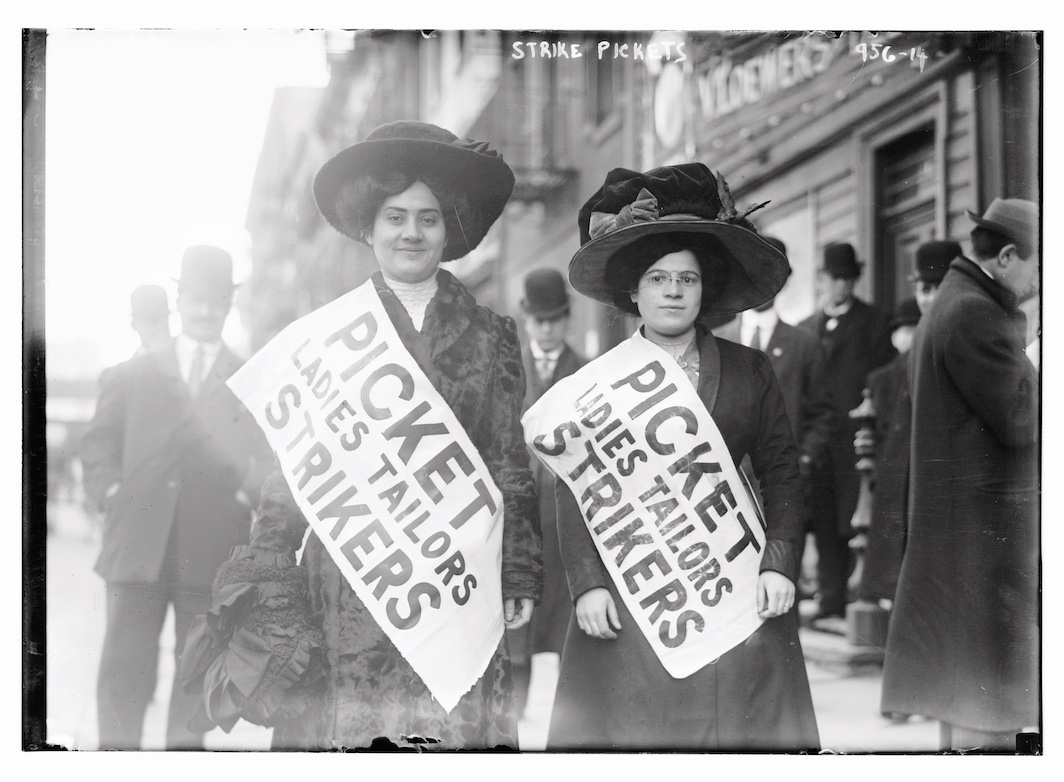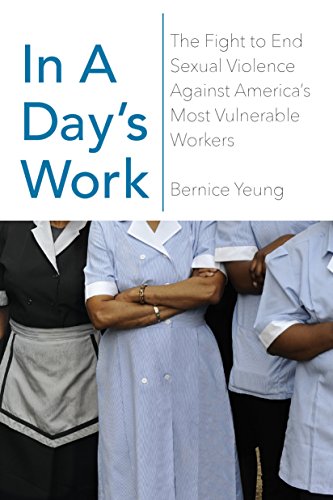
Alex Press

IN 2004, DAISY PITKIN, a young staff organizer for the Union of Needletrades, Industrial, and Textile Employees (UNITE), is recounting the union’s history to a group of ironworkers, roofers, painters, and laundry workers assembled for organizing training. She begins with the founding of UNITE’s predecessor, the International Ladies’ Garment Workers’ Union, in 1900, and continues with the strike by New York City garment workers, nine years later, that came to be known as the Uprising of the 20,000. She tells her audience how Clara Lemlich, a twenty-three-old garment worker, called for the strike during a meeting at Cooper Union, and 
GET BIG FAST was an early Amazon motto. The slogan sounds like a fratty refrain tossed around at the gym. Jeff Bezos had it printed on T-shirts. More than twenty-five years after leaving his position as a Wall Street hedge-fund executive to found Amazon, Bezos’s size anxiety is long gone. (At least as it pertains to his company; the CEO’s Washington, DC, house has eleven bedrooms and twenty-five bathrooms, a bedroom-to-bathroom ratio that raises both architectural and scatological questions.) Bezos is now worth $180 billion. Amazon, were it a country, would have a larger GDP than Australia. 
When Hosea Hudson, a labor organizer and member of the Communist Party (CP) in Birmingham, Alabama, approached potential recruits, he didn’t minimize the stakes of what he was asking them to do: “You couldn’t pitty-pat with people. We had [to] tell people—when you join, it’s just like the army, but it’s not the army of the bosses, it’s the army of the working class.” For a black worker in the Deep South of the 1930s, there was no way to justify lying to fellow workers about what they were signing up for. Assassinations of labor organizers, often simply recorded as 
“I often feel like I’m being suffocated in my magnificent desert.” So wrote Victor Serge to Dwight Macdonald of his exile in Mexico. For Serge, exile was nothing new; he’d been a persecuted militant for most of his life. But his simultaneous opposition to Stalin and refusal to renounce the revolution left him isolated in the stifling hothouse of the country’s left-wing exile community. Macdonald tried to find Serge publishers in the United States, but with little luck. (Of the editors who rejected his manuscripts, Macdonald wrote, “There’s nothing here but cowardice on the part of these sheep.”) Cowardice; it’s 
While #MeToo has exposed the pervasiveness of sexual abuse in a handful of high-profile industries, its priorities have so far reflected broader social hierarchies, giving outsize attention to the experiences of a privileged minority. In a Day’s Work shows us what harassment looks like outside Hollywood and the Beltway. A journalist at the Center for Investigative Reporting, Bernice Yeung has been on this beat for years, producing necessary, unglamorous exposés of the abuse suffered by low-wage laborers—mostly immigrants, mostly women—who are particularly vulnerable to sexual violence at work. Focusing on farmworkers, caregivers, maids, and janitors, Yeung’s investigation takes us into